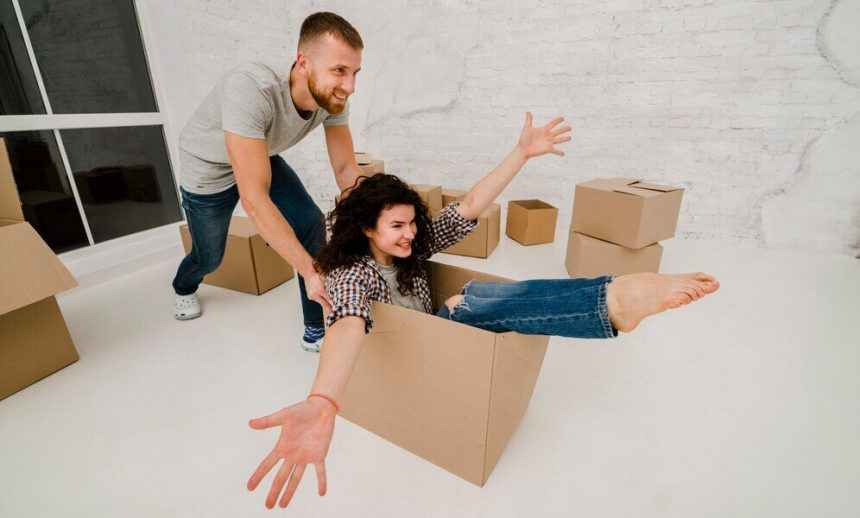Moving to a new home can be an exciting time, but it also presents its own set of obstacles. One of the most common concerns is that their goods arrive securely at their new destination. Whether it’s fragile objects, massive furniture, or everyday necessities, the possibility of damage during the move is always present.
Fortunately, with proper planning and preparation, you can reduce this danger while keeping your valuables secure. In this post, we’ll go over seven professional recommendations to help you avoid damage throughout your move, from packing properly to handling fragile objects with car
By taking a few easy steps, you may make your move easier and less stressful, ensuring that everything arrives intact.
1. Secure your belongings from door bumping
A reputable moving company will inform you that it is relatively easy to damage your belongings or property if the doors are not appropriately handled. People frequently collide with a half-open door or stumble into it while carrying something. This is simply owing to the rush and turmoil that a move entails. It may not be much if you carry a box with well-padded interiors.
After all, damage in such a situation is unlikely. However, if multiple individuals attempt to transport a bed and one collides with a door, the scenario changes. The person either risks injury or damages the furniture they are moving. To avoid damage during your move, ensure that doors are firmly locked and do not get in the way.
2. Use the correct packaging
Using proper packaging is critical to avoiding damage during your move. As a result, understanding how to properly pack for a relocation is critical. If you use a too-large box, your belongings will rattle around inside and become damaged, especially if there are several fragile objects in it. If the container is too small, it may become deformed and rupture. Or your thing becomes misshapen or shattered inside it.
Thus, it is better to use boxes just large enough to allow for some wiggle room for the item you intend to place within and then use cushioning to prevent movement. If you put multiple items in the box, you might wish to wrap them separately with padding.
3. Gather some moving blankets
Moving blankets are another great option to protect your belongings throughout the move. Large furniture and appliances will probably not fit in a box. At least not unless you still have the original packing, which is quite doubtful. This is where moving blankets come in. They are thick, soft rolls of fabric that can be used to entirely wrap around the object you are transporting.
It will keep little bumps and scrapes from damaging your belongings throughout the move.
4. Hire a competent moving company
If you want to avoid damage during your move, there is no better approach than to engage qualified specialists. You should search for previous customer reviews or ask for referrals. After all, we’re talking about the folks who will be handling your belongings. If they do not perform it correctly, the damage is inevitable. All it takes is for someone to forget to tie down your belongings before driving the vehicle swiftly. Your stuff would slide all over the vehicle’s inside and most likely get damaged.
Moving firms use a variety of strategies to ensure that their staff do a good job. If they want to continue obtaining positive feedback and new clients, they must maintain high professionalism. They must maintain a reputation for dependability and trustworthiness. While it may seem unusual, one approach to ensure excellent service is compiling a list of goods moving firms would not move.
5. Secure all moving bits

Nothing is more complicated than trying to prevent damage to your belongings during a move while managing furniture with moving parts. It refers to the handles of compartments, wheels, or open portions, such as doors or drawers, that can abruptly come loose when you elevate the object in question.
In such a case, it is quite easy to scrape such pieces on the edge of a doorframe or lose your grip while attempting to retain them. This is why they should be taped down, removed, or secured in another way. That way, you lower the likelihood of an accident and boost the safety of your property.
6. Attempt to disassemble items of furniture or appliances
Preventing damage during your move can be challenging if the thing you’re attempting to move securely is enormous. In some circumstances, these components can be disassembled to ensure their safety. Some wardrobes are simply too massive to move without being disassembled.
Of course, you may need to hire a professional if you are unclear whether you can complete the task effectively or do not have the necessary materials.
Similarly, don’t forget to keep track of all the parts after your goods have been disassembled! If you lose any of your things, you will most likely be unable to replace them, especially if you have older appliances or furniture.
7. Use plenty of padding and bubble wrap
You don’t need to pad everything (after all, your t-shirts won’t “break” during shipping), but you shouldn’t scrimp on bubble wrap either. It’s worth the extra time and money to carefully pad fragile things, personal mementos, and gadgets to prevent damage.
Use crumpled newsprint, packing peanuts, towels, blankets, and/or bubble wrap to cushion your valuables before placing them in the box, and then fill any gaps (including the space between the box’s contents and the lid) with additional packing material. This will maintain everything in place during the drive, so a quick curve does not convert your crystal vase into shards.
In the end!

Following these seven tips can considerably reduce the danger of damage during your move and secure your valued belongings. Careful planning, packing, and handling practices can ensure that everything arrives at your new home in perfect shape. Extra work can significantly improve your move’s safety, ease, and efficiency. So, plan ahead of time, take your time, and relish the prospect of starting over in your new environment.








